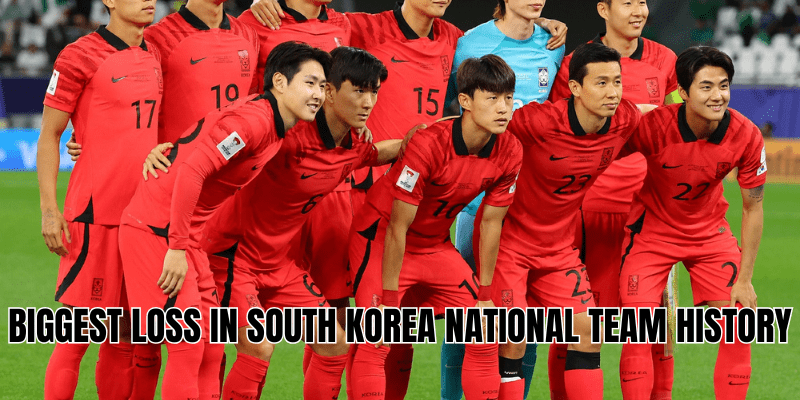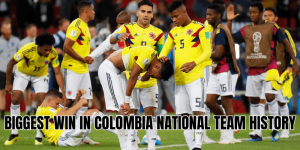It’s a tough opening line for fans, but here we go: the biggest loss in South Korea national team history came in the early days of its international journey — a brutal 0–12 defeat to Sweden in 1948. That red-letter record still haunts the archives of the Korea Football Association (KFA), and offers deep lessons about how far the team has come. In this article, CantoKick will walk you through the context, consequences, and comparisons behind that brutal result — and show how the scar remains part of Korea’s football lore.
The 1948 Disaster: Sweden 12, Korea 0
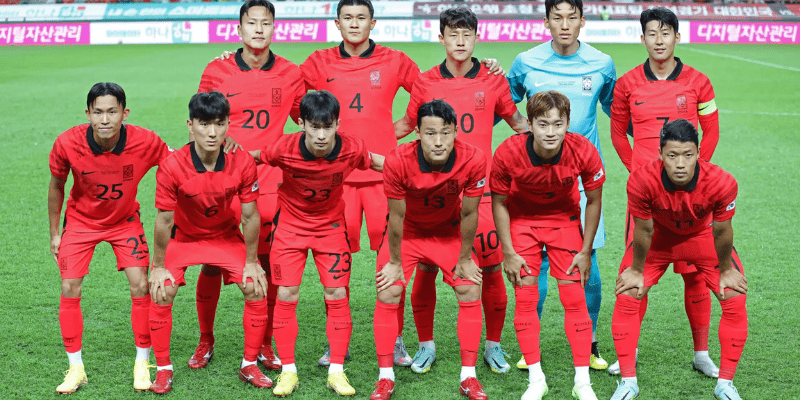
Historical context
South Korea’s national team was still in its infancy in 1948. The country was recovering, and Korea’s players had limited exposure to high-level coaching, tactics, or match experience. Despite those challenges, South Korea fielded a team to compete in the men’s football tournament at the 1948 London Olympics.
Match facts and details
On 5 August 1948, South Korea faced Sweden in an Olympic match. The Swedes, far more established in European football, overwhelmed the Koreans. The final score: Sweden 12, South Korea 0. The Korean side was powerless to respond — defensively overrun, tactically outclassed, and perhaps physically outmatched. That remains the largest defeat the national side has ever suffered to date., that 0–12 defeat is still listed as the “Largest Loss” in the team’s records. (In more modern summaries of the South Korea national football team, the “Largest Loss: 0–12 (London, England; 5 August 1948)” is explicitly cited.)
Other heavy losses in Korea’s history
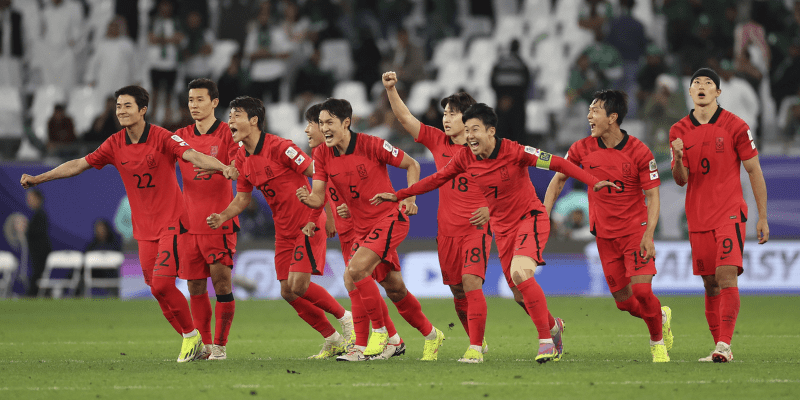
Although the 0–12 defeat is the record low, Korea has endured a few other humiliating scorelines over the decades. Reviewing the data helps us see patterns of growth, evolution, and survival.
Top margin defeats
Looking at all-time matches, Korea’s worst losses include:
| Rank | Date | Opponent | Score | Competition |
| 1 | 5 August 1948 | Sweden | 0–12 | Olympic Games |
| 2 | 16 October 1964 | ?? | 0–10 | Olympic Games |
| 3 | 17 June 1954 | Hungary | 0–9 | FIFA World Cup |
| 4 | 20 June 1954 | Turkey | 0–7 | FIFA World Cup |
| … | … | … | … | … |
These examples come from compiled match-result archives of the Korea national team.
The 1954 World Cup losses to Hungary (0–9) and to Turkey (0–7) were especially stinging — they remain among Korea’s worst ever in World Cup competition.
1954 World Cup humiliation
In the 1954 tournament, Korea made their World Cup debut. Facing Hungary, they lost 9–0; then, they also lost 7–0 to Turkey. Those back-to-back drubbings left Korea with the worst goal difference in the tournament and left a legacy of the brutal gulf between emerging football nations and the continental powers of that era.
Why the 0–12 loss still matters
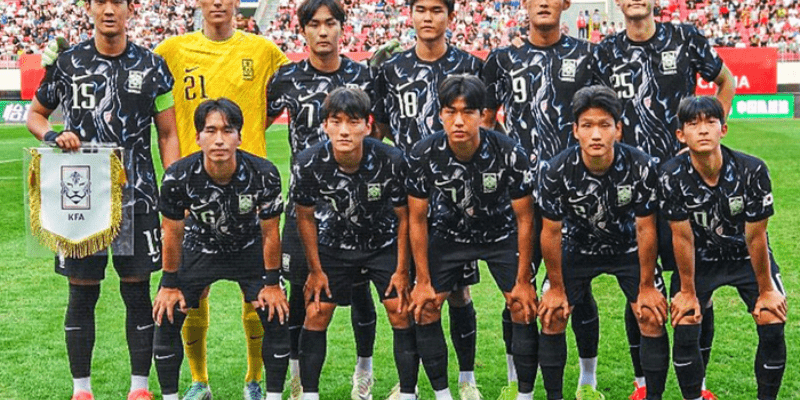
You might wonder: after so many decades and countless matches, why does that 1948 result still matter? Its importance lies in what it symbolizes, how Korea’s football developed, and what fans can learn.
Symbol of humility and roots
That defeat stands as a stark reminder: South Korean football didn’t begin in glory. It began in struggle. The road to becoming one of Asia’s powerhouses was paved with hard lessons like that loss. It’s a humbling early chapter in the national narrative.
Benchmark of progress
By comparing past disasters to more recent results, Koreans—and fans at large—can appreciate how far the team has come.
Tactical, physical, and structural evolution
In 1948, Korea lacked modern coaching, fitness regimes, strategic systems, exposure to international play, and institutional football development. Over the decades, they’ve imported expertise, invested in youth development, imported foreign coaches, and built infrastructure. That loss underlines how much needs to change when building a national football program — and how long it truly takes.
Comparisons: Korea’s heavy losses in World Cup vs in general play
When people hear “biggest loss,” sometimes they think “in a World Cup.” So it helps to contrast the all-time worst with the worst in football’s grandest stage.
Worst World Cup match loss
At the 1954 World Cup, the 0–9 defeat to Hungary is Korea’s worst-ever in World Cup play. That defeat is often cited in World Cup record lists (e.g. “Hungary 9, South Korea 0”) as one of the biggest margins in tournament history. That remains Korea’s low-water mark in world finals competition.
In friendlies and Olympic matches
The 0–12 defeat came at the Olympics, not in a World Cup. Olympic football at that time carried full national status. In friendlies and qualifiers since then, Korea has lost by large margins but never again by double digits. Generally, in modern era, losing by more than 4–5 goals is rare for Korea’s national side.
The survival, resilience, and sometimes surprising performances in later decades make those early heavy defeats feel distant — but still part of the DNA.
What the loss reveals about Korean football maturation
That 0–12 fiasco—and other heavy early losses—reveal several truths about how national teams evolve, especially for countries outside the traditional football powers.
Experience gap matters
- Korea’s players in 1948 were inexperienced in international play. Facing Europe’s elite, the experiential gap was massive. Over time, Korean players gained exposure. Coaching and tactics evolve
- In the 1940s and 1950s, tactical sophistication in Korea was minimal. Defensive systems, pressing, scouting, video analysis — all those modern tools were missing. As coaching standards rose and foreign influence seeped in, Korea’s approach stabilized.
- Infrastructure and youth development
- Building academies, youth leagues, better domestic competition, and a structured pipeline of training transformed the player pool. Players became more technically fluent, physically fit, and tactically aware. Those structural changes are essential to avoiding catastrophes like 0–12.
- Psychological resilience
- After suffering such humiliations, a football culture must develop mental toughness. Accepting loss, building confidence, and using failure as motivation are critical. Korea’s football culture gradually internalized those lessons.
Legacy and how fans remember the 0–12 loss
Football fans rarely forget the worst defeats, for they’re part of collective memory and identity — like scars in a nation’s sporting soul. In Korea, the 1948 result is rarely mentioned in everyday conversations, but in record books and statistical retrospectives it towers over all others.
- In official team records, “Largest Loss: 0-12 (London, 5 August 1948)” is still listed.
- In all-time match result summaries, that match is the top “Heaviest Defeat.”
- When listing Korea’s opening trajectory or discussing the gap between early years and modern success, that game is a stark, powerful anecdote.
Fans and historians sometimes use it as a rhetorical pivot: “Look how far we’ve come — from losing 12–0 in 1948 to playing in World Cups, winning Asian Cups, and exporting top players abroad.”
Lessons for other emerging national teams
Beyond Korea’s own story, the 0–12 result and its context offer takeaways for any emerging football nation:
- Early results may be brutal, but they don’t define the future.
- Development requires long-term investment: youth systems, coaching, exposure, infrastructure.
- Humility in defeat, reflection, and strategic planning are essential.
- Over time, structural changes can make the difference between perpetual underdog and emerging contender.
Conclusion
The biggest loss in South Korea national team history — that harrowing 0–12 defeat to Sweden in 1948 — is more than just a statistical footnote. It is a symbol of Korea’s football infancy, a yardstick against which growth can be measured, and a reminder of how far the country has traveled on the pitch. As you follow Korea’s current campaigns, match results, player development, or plans for the future, remember that even the deepest scars can heal — and.
If you’re hungry for more — player profiles, Korea’s top victories, or deep dives into match tactics — CantoKick has you covered. Feel free to explore our sections on Korean football history, record matches, and rising stars. And if you want me to do a companion article — e.g. “biggest win in South Korea national team history” or “worst World Cup losses by Asian nations” — just say the word.
